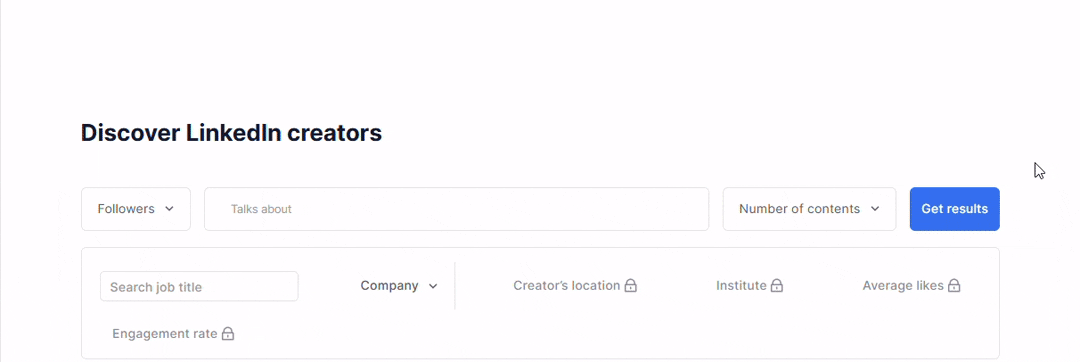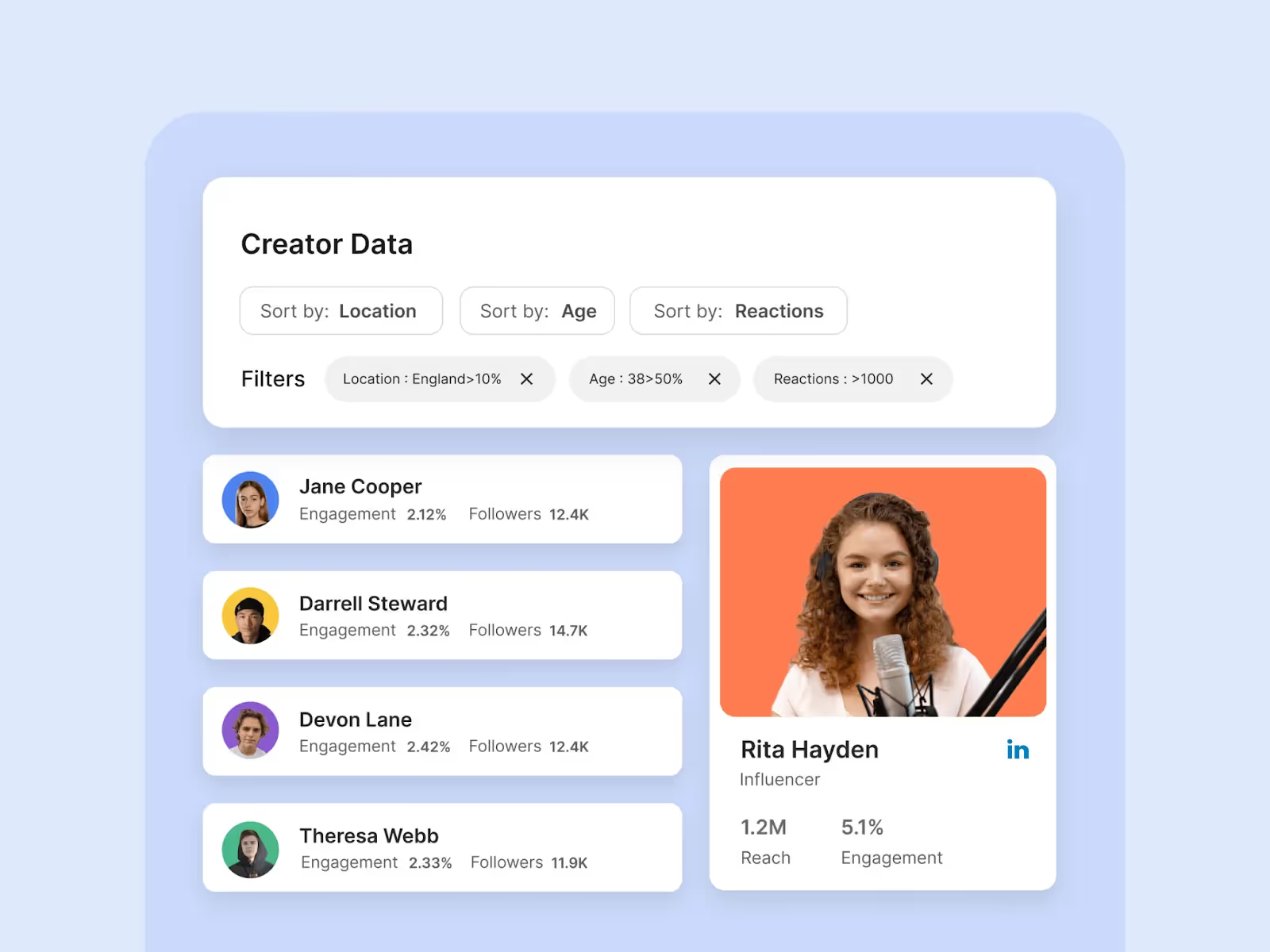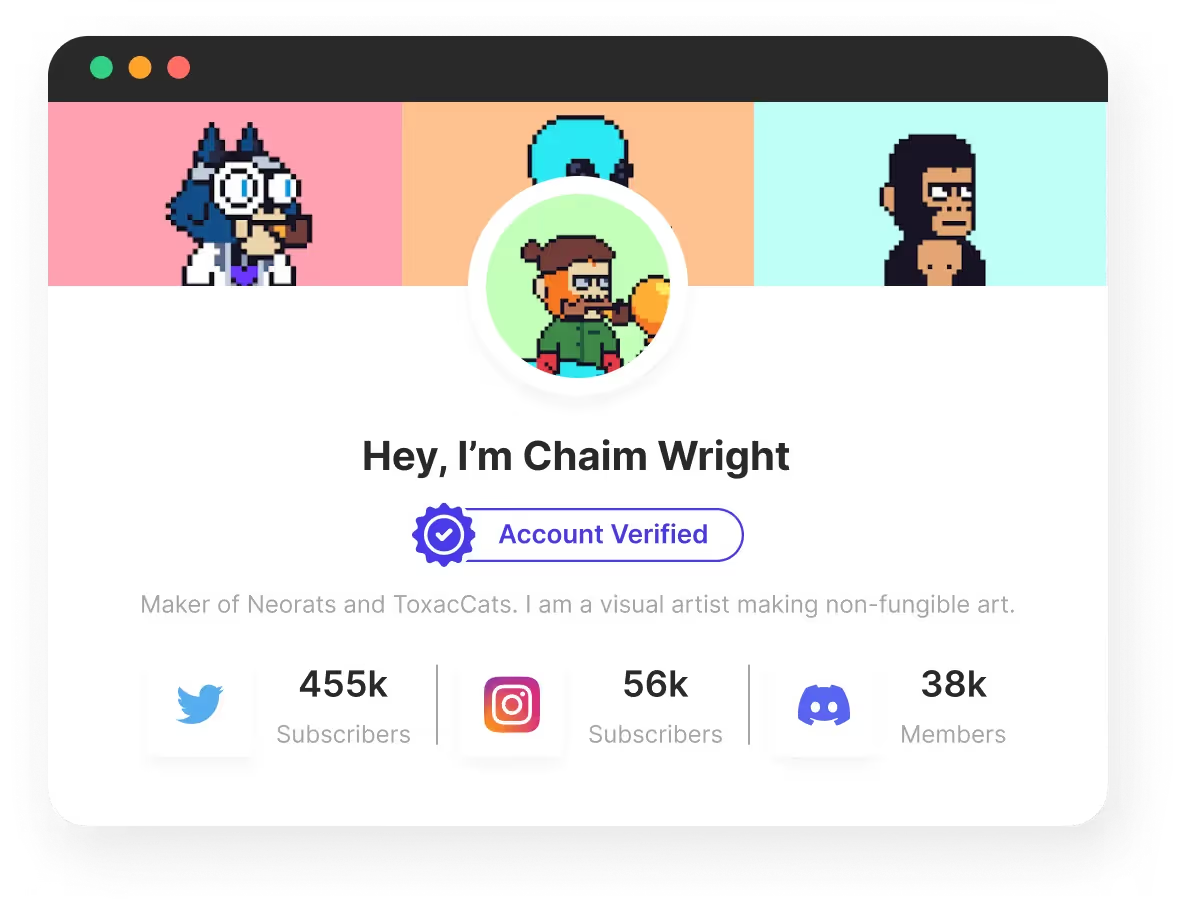A creator has 200K followers. On paper, that sounds like a dream, right? Big audience, polished content, great vibes.
But pause for a second, how many of those followers are paying attention? How many are bots? How many are just... there?
This is where brands often trip up.
The feed looks amazing. The numbers look good. But the impact? Not always what it seems. And in a world where influencer marketing spend is set to reach $32.55 billion in 2025, there’s not much room for “let’s hope for the best.”
With access to the Instagram API, TikTok API, and LinkedIn API, you can stop depending on surface-level stats and start doing real, in-depth influencer background checks.
This guide will show you how to build an automated vetting workflow. You’ll learn to tap each platform’s API, vet creators like a pro, and avoid wasting budget on bad fits.
Why Manual Vetting No Longer Works in 2025
Many of us have tried spreadsheets, done the late-night tab switching. And every time, it hits a wall.
Here’s why you should stop depending on manual checks:
- Overwhelming volume: Thousands of new influencers appear daily, making one-by-one reviews impractical.
- Fake followers: Large follower counts often include bots..
- Misleading engagement: High likes/comments can come from engagement pods or giveaways, not real influence.
- Missing context: Manual checks can’t easily reveal if the audience matches your ICP or if the content is consistent.
- Scalability issues: Without automation, background checks can’t keep pace with growth. You need tools that scale with your campaign.
LinkedIn vs Instagram vs TikTok APIs: What Each Offer
Influencer data looks very different depending on where you pull it from.
On LinkedIn, you might see a clean professional profile with C-level followers. On Instagram, it’s more about social engagement. TikTok, on the other hand, gives you a window into content creativity, trends, and reach velocity.
The right API depends on what you're trying to uncover.
If you're vetting a B2B creator, LinkedIn makes the most sense. For lifestyle, wellness, or beauty, Instagram tells a better story. And when you're chasing cultural momentum or Gen Z attention, TikTok is the one to explore.
Here’s a detailed comparison of the three APIs:
How LinkedIn API Helps You Vet Influencers
For B2B campaigns, LinkedIn offers a layer of context that other platforms usually can’t. Instead of focusing on entertainment value or aesthetics, it surfaces signals about credibility, career background, and professional influence.
With the LinkedIn API, teams can move beyond profile screenshots and start pulling structured data that matters during vetting.
How to Find Perfect LinkedIn Influencers with Phyllo -- Steps to Boost Your Campaign #phyllo
Access verified professional data
The most apparent benefit of LinkedIn’s API is accuracy. Instead of depending on someone’s bio or assumptions based on content, you get access to verified data tied to their career history.
This includes:
- Current and past job titles
- Companies they’ve worked at
- Industries they operate in
- Listed skills and endorsements
- Education and certifications
Having this data removes additional efforts. It helps ensure you’re partnering with someone who’s involved in your industry, not just commenting on it from the sidelines.
For example, one influencer might claim to create ‘finance content,’ but LinkedIn data could show a hospitality background. Another might be a SaaS product manager with relevant peers in their network. API data instantly highlights the true fit.

Find perfect LinkedIn influencers with Phyllo
Understand audience demographics
Not all audiences carry the same weight. Two creators might cover similar topics, but the people listening can be completely different.
LinkedIn’s API helps map out that difference. It gives a clear view of who’s following an influencer, broken down by industry, role, location, and job level. These details matter when you're targeting specific buyer types or looking for reach inside a niche segment.
You can see:
- Geographic distribution of followers
- What departments do they work in
- How experienced they are
- The industries they’re active in

Know the audience better with Phyllo
This level of detail helps you to match creators to campaign goals. If you need to reach SaaS decision-makers, you wouldn’t pick an influencer whose audience is primarily students.
A smaller creator whose followers are mid-level SaaS managers may outperform a larger influencer with a mismatched following.
Track authentic engagement
Instead of just counting likes, use LinkedIn’s API to see who’s engaging: managers, VPs, or CEOs. These are the engagements that drive real leads.
LinkedIn’s API helps you search for that. You can see whether likes and comments are coming from people who matter in your space. Think managers, VPs, founders, folks who have influence, not just presence.

Track engagement of creators with Phyllo
This can help you spot the difference between two creators in a SaaS campaign. One had more likes overall, but the other? Their posts were getting replies from CMOs and product heads. Guess which one led to actual leads?
Surface-level numbers don’t tell the whole story. It’s who’s watching that makes the impact.
Analyze post history and content themes
The best creators are consistent. And the API allows you to look back and see what they talk about over time.

Know everything about your creator with Phyllo LinkedIn API
You get access to past posts, content types, and frequency. It’s like seeing their body of work all in one place. You start to notice if someone sticks to their niche or bounces all over the place.
I once checked a tech creator who, on the surface, looked aligned. But once we pulled their post history, it turned out they hadn’t mentioned anything product-related in months. Their content had shifted to lifestyle and personal updates.
Not a deal-breaker, but a mismatch for the campaign we were running.
Spot fake or inactive profiles
Some profiles look polished. But when you pull the data, the cracks show up fast.

Analyze fake followers of the creator with Phyllo
The API makes it easier to catch profiles that are inactive, poorly connected, or underutilized. You’ll spot missing sections, unusually low activity, or outdated job info.
One profile I reviewed had over 20K followers and “B2B strategist” in the headline. But once we pulled the API data, it turned out they hadn’t posted in over a year.
The work history hadn’t been updated since 2021. No interactions, no new connections, just a static page with inflated numbers.
That kind of insight helps you avoid wasting time or budget on someone who’s no longer active or credible in their field.
How to Use the Instagram API for Influencer Vetting
Instagram might be the flashiest platform when it comes to influencer marketing, but behind the filters and aesthetics, it’s also one of the trickiest to vet manually.
That’s where the Instagram API comes in. It gives you access to the kind of data that cuts through vanity metrics and helps you evaluate creators based on substance, not surface.
Let’s walk through how to get set up and use it to screen Instagram influencers more intelligently.
Effortless Influencer Vetting: Scan Your Favorite Influencer in Minutes with Phyllo Social Screening
Step 1: Get API access via Meta for Developers
Start by heading over to Meta for Developers. If you haven’t already, you’ll need to create an account or log in.
From there:
- Set up a new app under your developer dashboard
- Add the Instagram Graph API to the app
- Link your app to a Facebook Page
Make sure the connected Instagram account is a Business or Creator account.
This is a critical step; only business or creator accounts that have been granted access to your app can be queried. Personal accounts won’t work here.
⚠️ Heads up: If you’re running influencer campaigns at scale, make sure your outreach flow includes steps for influencers to authenticate your app. Otherwise, you won’t be able to fetch their data.
Step 2: Set up authentication and permissions
Once the app is ready, it’s time to handle authentication. Instagram uses OAuth 2.0 for secure access.
Here’s what you’ll need:
- An access token from an authenticated user (i.e., the influencer or account owner)
- The proper permission scopes, like:
- instagram_basic – for profile and media data
- pages_show_list – to list and confirm linked Pages
- ads_management - if you’re analyzing promotion-related metrics
Once these permissions are granted, your app can safely retrieve account-level insights and post data.
This step might feel technical at first, but once you’ve set it up, you’ll get reliable data… You’ll stop depending on screenshots and start working with verified, first-party data directly from Meta.
Step 3: Pull influencer profile data
Once the app is authenticated, you can start recovering core profile information.
Use the /me/accounts endpoint to get a list of connected Instagram accounts, then query each account using /user_id?fields=.... This gives you a snapshot of the influencer.
Key details include:
- Username and bio
- Follower count
- Account type (Creator or Business)
- Profile picture and listed category (like “Entrepreneur” or “Health Coach”)
You won’t get the full story here, but this is your starting point. It helps you understand the niche they operate in and whether it aligns with your space.
Step 4: Analyze audience insights
The next step is to go beyond the profile and look at who is following the creator.
If your app has the correct permissions, you can use the /insights endpoint to access audience demographics. The data includes:
- Top countries and cities
- Age ranges and gender split
- Active hours and peak engagement windows
This helps you answer critical questions early: Are they speaking to people in your target geography? Does their follower base include working professionals, or mostly teens and hobbyists?
Being able to verify that audience alignment early can save you from investing in influencers who look good on the surface but won’t move the needle for your campaign.
Step 5: Review content performance
Next, head to /media to fetch the creator’s recent posts. For each post, the /media/media_id/insights endpoint gives you access to performance data.
You’ll be able to see:
- Content types: single images, stories, reels, or carousels
- How many people did the content reach, and how often was it saved
- Engagement signals: likes, comments, shares
This is where you start to separate real influence from passive scrolling. You might notice, for example, that their static posts get decent likes, but their Reels consistently drive high saves and shares, hinting at a more substantial impact when they go short-form.
Step 6: Check for brand safety and relevance
Once you know the numbers, it’s time to look at context.
Go through their recent captions, hashtags, and tagged mentions. You’re not just checking what they post, but how they communicate and who they associate with.
Some things to look for:
- Do they promote any of your competitors?
- Have they used any language or references that could be off-brand or controversial?
- Are their topics consistently tied to your niche, like fintech, wellness, or SaaS?
⚠️ Caution: Even a well-aligned creator can become a liability if they’ve previously partnered with a conflicting brand or posted something polarizing. It’s better to catch this early than after your logo appears on their feed.
Step 7: Score and shortlist influencers
Now that you’ve pulled all the data, profile details, audience insights, content performance, and brand safety, it’s time to make sense of it.
Create a scoring system based on the metrics that matter most to your campaign.
For example:
- Engagement rate: weighted toward meaningful comments, not just likes.
- Audience match: how closely their followers map to your ICP.
- Content relevance: how often they talk about your category.
- Brand affinity: if they’ve already used or mentioned your product before.
You don’t need to overcomplicate it. Even a basic scoring model helps keep decisions consistent across your team.
Step 8: Automate future vetting
Once you’ve built a solid vetting flow using the Instagram API, you can start automating it.
Add these API calls to your internal dashboard, CRM, or outreach tool.
This makes it easier to:
- Refresh influencer scores regularly
- Flag new profiles for review
- Track changes in content themes or engagement over time
💡Tip: Build triggers for significant changes, like a sudden drop in engagement or a profile shift from “Fitness Coach” to “Crypto Enthusiast.” These alerts help your team stay ahead without manual profile monitoring.
What You Can Uncover with TikTok’s Creator Data
TikTok can feel like a whirlwind, with trending sounds, overnight virality, and constantly shifting formats.
But once you tap into creator-level data, patterns start to emerge. With the proper API access, you’re not guessing who has real influence; you’re seeing it.
https://www.youtube.com/watch?v=D7nK9Jx_w9A
True reach and visibility
Follower counts can be misleading on TikTok. What matters more is how often someone’s content gets seen.
TikTok’s data reveals:
- Average views per video
- Watch time (how long people stay on the content)
- Video reach and how often content lands on the “For You” page
This gives you a clearer picture of influence. A creator with fewer followers but continued reach might be more valuable than someone who went viral once and then disappeared from timelines.
Audience demographics
TikTok’s Creator Marketplace API helps you access insights about who’s watching.
You can see:
- Top viewer locations
- Age breakdown
- Gender split
- Key interest categories
This helps you answer the critical question: “Does this person speak to my market?”
For example, if you’re marketing a language learning app in Southeast Asia, a creator with substantial reach in the U.S. and Europe might not be the right fit, no matter how engaging their content is.
Video performance patterns
Some creators are consistent; others spike once and fade. TikTok’s data allows you to track trends over time.
You can spot:
- Which video formats perform best (challenges, tutorials, POVs, etc)
- Their post frequency and consistency
- Whether specific topics always get more views or saves
These patterns help you predict what kind of branded content will work, and whether a creator can repeat their past success in your campaign.
Final Thoughts & What to Do Next
Most brands still depend on gut feel or surface-level metrics when choosing influencers.
But without a proper influencer background check, it's easy to miss red flags like fake followers, misaligned audiences, or risky content patterns. APIs allow you to pull real data straight from the source.
Using the Instagram API, TikTok API, and LinkedIn API, you can pull real data straight from the source and build a more honest picture of every creator.
Pair that with automated influencer screening, and you’ve got a system that scales with your brand.
Phyllo simplifies the process: it pulls live data from each API and automates your screening rules, so your team can vet influencers confidently instead of guessing.
Ready to leave manual vetting behind? Get a demo to see how Phyllo fits your workflow.
FAQ:
What’s the best way to check if an influencer has fake followers?
Look for low engagement, sudden follower spikes, or generic comments. Phyllo pulls real-time, first-party data to help you flag fake follower patterns automatically.
Is it legal to pull influencer data from platforms?
Yes, if the influencer gives consent and the data is accessed through the platform’s official API, it’s completely legal. Always make sure you’re following the platform’s terms of service.
What’s the difference between using Phyllo vs direct APIs?
Direct APIs are scattered and hard to manage. Phyllo gives you clean, unified data across TikTok, Instagram, and LinkedIn, without the integration headaches.










.avif)


.avif)
.avif)
.avif)
.avif)